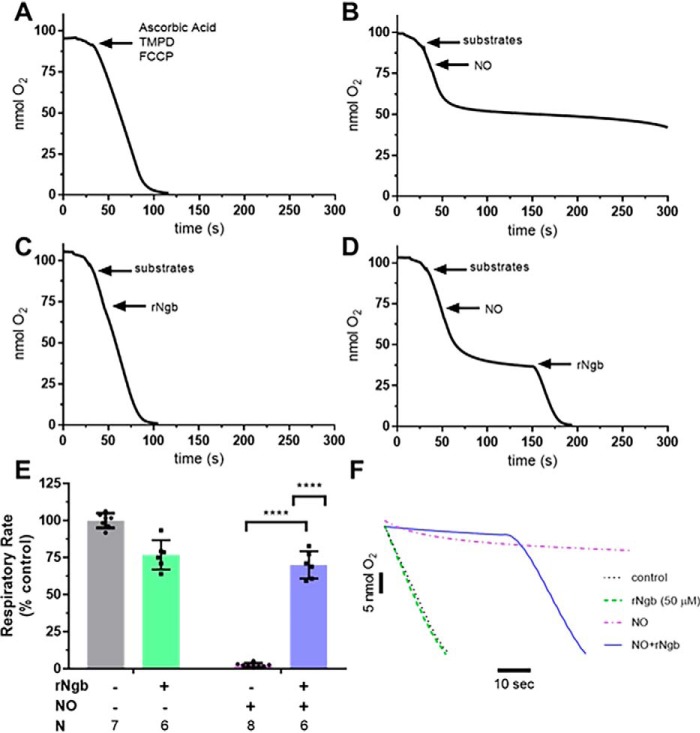Figure 5.
In vitro effects of NO on complex IV activity and reversal by Ngb-H64Q-CCC treatment. To demonstrate the specific effect of NO on complex IV activity in isolated rate mitochondria, a closed chamber with a Clark-like oxygen electrode was utilized. Here, instead of succinate and ADP as substrates for oxidative phosphorylation, a combination of FCCP, TMPD, and ascorbic acid was added. These substrates facilitate the direct transfer of electrons to cytochrome c and vis-à-vis reflect cytochrome c oxidase activity. A–D, four conditions were measured: baseline level of TMPD-ascorbate–driven respiration (labeled raw data, A), respiration after the addition of 50 μm of PROLI-NONOate (B), respiration after the addition of 50 μm chamber concentration of Ngb-H64Q-CCC (C), and finally, respiration after the addition of 50 μm of PROLI-NONOate, followed by the addition of 50 μm of Ngb-H64Q-CCC (D). These rates were compared with the average rate of baseline TMPD-ascorbate–driven respiration for a given day of experiments and the same animal (measured TMPD-ascorbate–driven respiration rate/average baseline TMPD-ascorbate–driven respiration rate). E, these ratios were compared between experimental arms. Here the addition of Ngb-H64Q-CCC itself slowed complex IV activity to 77 ± 10% of baseline. The addition of NO slowed complex IV activity to 2 ± 1% of baseline. The addition of Ngb-H64Q-CCC after NO lead to a respiration rate of 70 ± 9% of baseline, markedly higher than NO untreated complex IV activity (unpaired Welch's t test; ****, p < 0.0001). In an unmatched regular two-way ANOVA, we determined that there was a significant interaction between Ngb-H64Q-CCC and exposure to NO (interaction term; ****, p < 0.0001; single line) (F, representative raw traces compared). rNgb, Ngb-H64Q-CCC.

